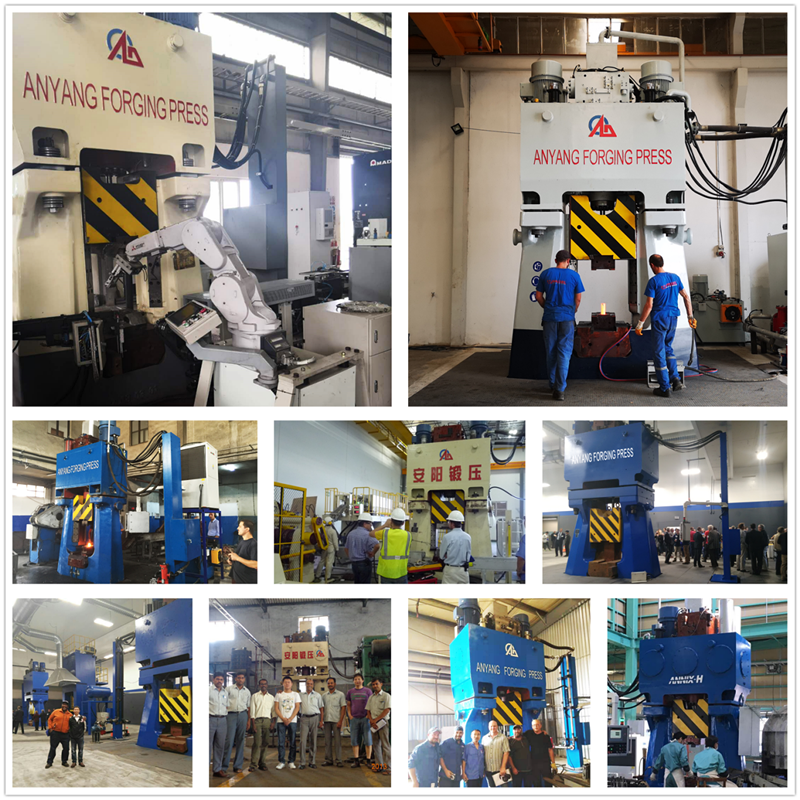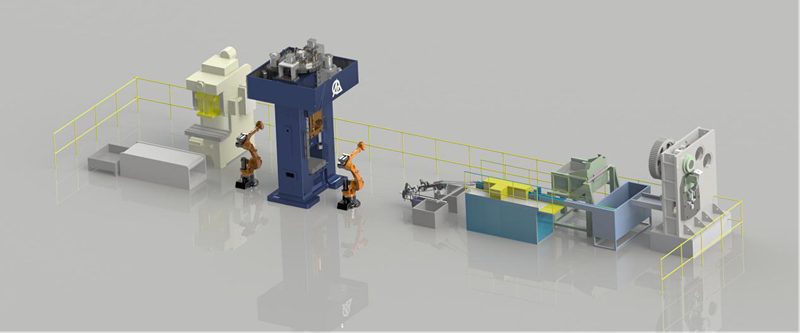Germany, Japan etc 80+ Countries.
Anyang Forging Press Since 1956
China National Forging Hammer Standard Drafter
Anyang Forging Press Since 1956
China National Forging Hammer Standard Drafter
1. Characteristics comparison of equipment performance
Features of die forging hammer
The die forging hammer is a forging equipment that can produce various die forgings under medium or mass production conditions. It can be used for multi-type die forging. Because of its simple structure, high productivity, low cost and adaptability to die forging process requirements, Therefore it is a commonly used forging equipment.
The special advantage of the forging hammer depends on its fast striking speed, so the mold contact time is short, which is especially suitable for the occasions that require high-speed deformation to fill the mold. For example, forgings with thin ribs, complex shapes and weight tolerance requirements. Because of its fast and flexible operation characteristics, its adaptability is very strong, some people call it "universal" equipment. Forging hammers are the most cost-effective forming equipment.
C92K series CNC Die Forging Hammers not only have the same advantages as traditional forging hammers, but also have the characteristics of high frequency, high precision, low energy consumption, long die life, easy operation and easy maintenance.

![]()
High frequency. Due to its unique hydraulic system, which enables the hammer to obtain bigger energy in a short stroke, namely, continuous forging with short stroke, high speed and high frequency is a reality, which creates conditions for efficient and rapid forming for forging production, this advantage of CNC forging hammer is unmatched by other forging equipment. (The striking frequency of the CNC hammer is 70-90 times/min, and the friction press is 6-15 times/min)
High precision. Due to its unique U-shaped integral frame, X-shaped radial guide structure and advanced hydraulic and electrical control system. The U-shaped integral frame ensures the rigidity of the frame and greatly improves the movement accuracy of the forging hammer. The digital programmable control system ensures the consistent output of the blow energy for the forging hammer operated by any worker, ensuring the consistency of the precision of the forging.
Low energy consumption. Due to the full hydraulic drive mode, its energy consumption utilization rate is more than 20 times higher than that of the traditional forging hammer. At the same time, due to the programmable control of the striking energy, the forging hammer can use the energy for the forging during work deformation without generating excess blow energy, avoid a waste of energy.
Long die lifespan. Because the CNC die forging hammer with the high-speed, short-stroke striking, the maximum striking speed can reach about 6m/s, and the forging forming time is shorter than 5~15ms (30~150ms for friction press), The mold cold strike time is about 2~3ms (the friction press is 30~60ms), so the impact loss and heat loss of the mold are greatly reduced, and the accurate digital energy control can make the actual output energy fit the deformation work of the forging, reduce the damage of excess energy (cold shock) to the mold and increase the lifespan of the mold.
Friction press
Because the friction press has the dual working characteristics of the die forging hammer and the hot die forging press, that is, there is a certain impact during the working process; the stroke of the slider is not fixed; the force between the slider and the table in the forging formation bearing by the frame structure of the press, etc. Therefore, friction press die forging has the following characteristics:
The stroke speed of the slider is slow and slightly impactful, and it can be deformed multiple times in a groove. It can provide large deformation energy for large deformation processes (such as upsetting and extrusion), and can also provide large deformation force for small deformation processes (such as coining and embossing).
Compared with CNC die forging hammers, friction presses have poor ability to withstand eccentric loads. They are usually used for single-slot die forging, and billet making is generally performed on other auxiliary equipment. Two grooves can also be arranged when the eccentric force is not large, such as press bending-final forging or upsetting-final forging. At the same time, friction press die forging is also restricted by disadvantages such as equipment tonnage, low working speed and provision of auxiliary equipment to make blanks.
Due to the structural characteristics of the friction press, the transmission of vibration to the outside is small, so the basic structure is relatively simple compared to the die forging hammer, and generally does not require a shock absorption mechanism. The cost of infrastructure is lower.
2. Automation
From the point of view of the automation, the CNC die forging hammer is PLC-controlled programmable strike equipment, and has the ability to expand into a fully automated production line. At the same time, because the CNC die forging hammer can be used for multi-die forging, it is being automated for upgrading, for more complicated forgings (blanking and pre-forging are required), the CNC hammer production line basically does not need to extra auxiliary equipment.

In summary, the numerical control die forging hammers have their own characteristics in forging applications compared to friction presses, and they can replace each other in many fields. When choosing, we also hope to compare the characteristics of your forgings and future development needs. In order to reduce the input cost as much as possible to achieve the maximum benefit.
If you want to learn more about forging machine, steel ball machine, briquette press or hydraulic riveter etc products, please send requirements to info@anyanghammer.com